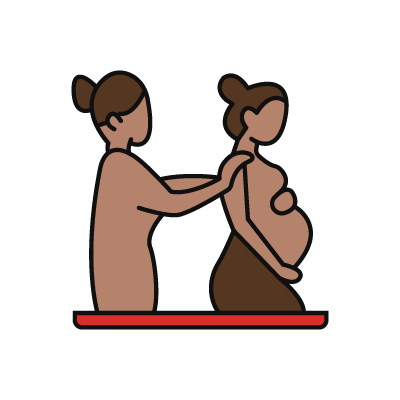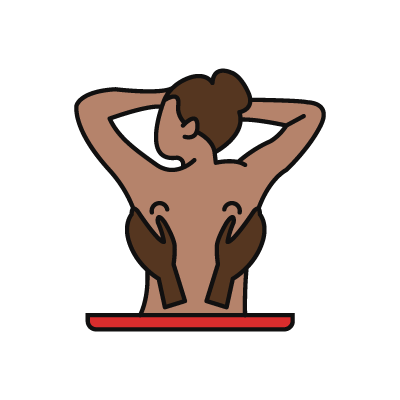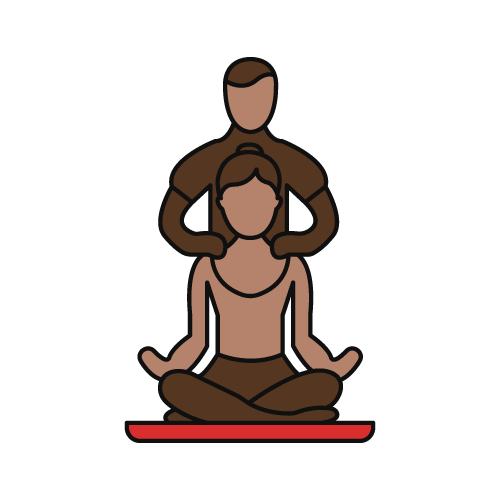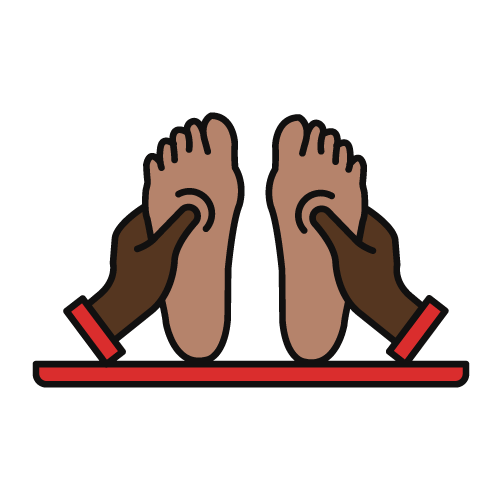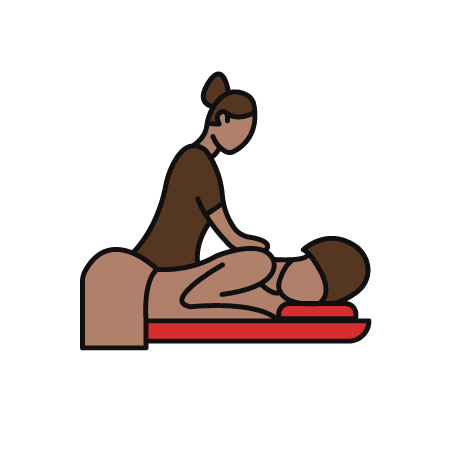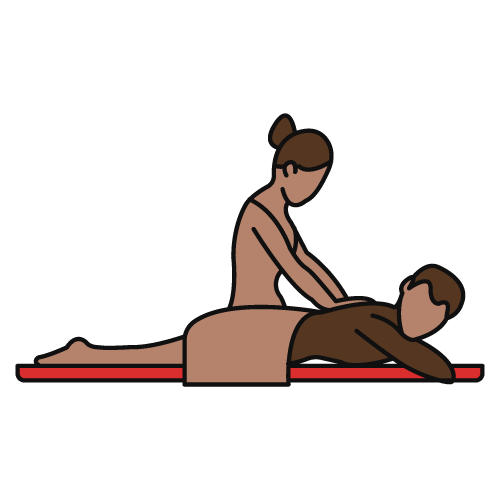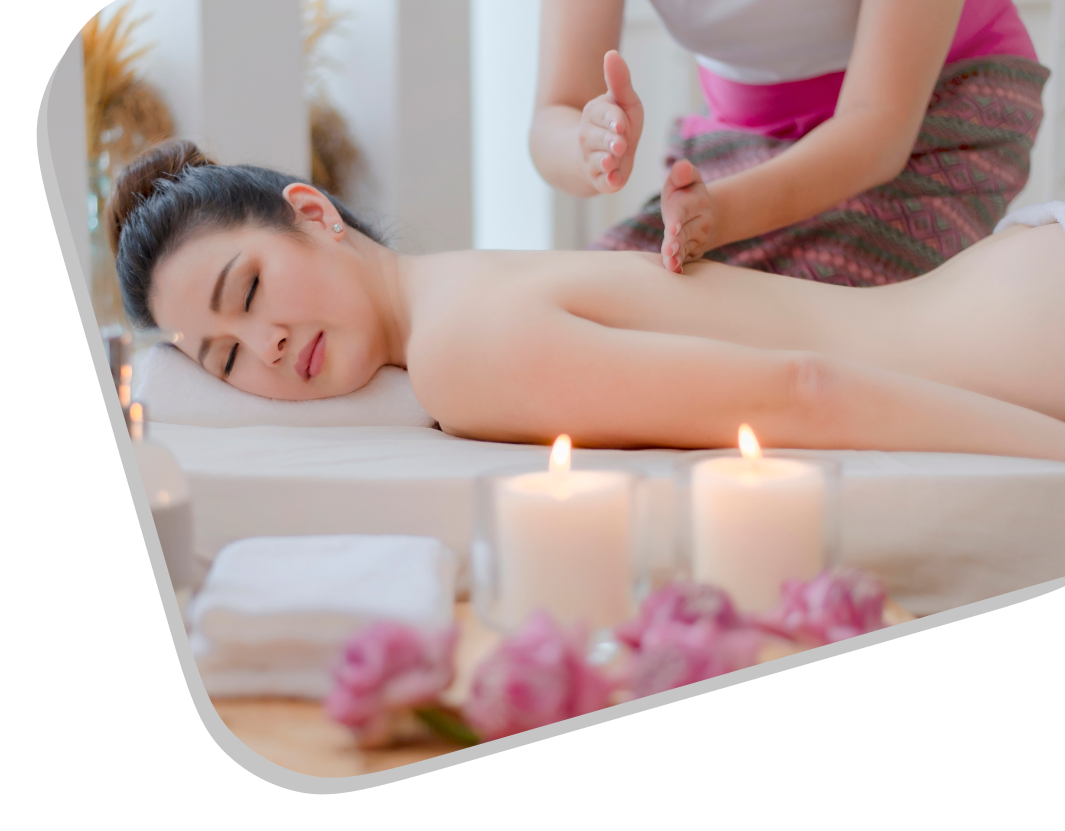
Escape The Grip Chronic Tension and Pain for Lasting Relief.
Claim your day back with a rejuvenating back, head, and shoulder massage. Starting from only £59.
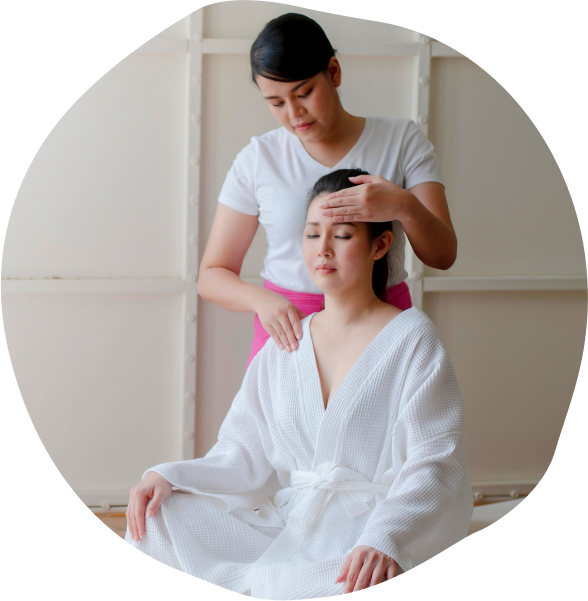
The Benefits of Back and Shoulder Massage
Popular Massage Treatments
Specialised care for your back and shoulders tension release.
FAQs
More info on Back & Shoulder Massage
The answer to this question depends on a number of factors, including the type of shoulder massage you are getting, the experience of the massage therapist , and the amount of time you have. A traditional shoulder massage may take anywhere from 45 minutes to an hour, while a Thai deep tissue shoulder massage may only take 30-45 minutes.
Finally, if you only have a limited amount of time, the therapsit will likely tailor the massage to fit the time you have available.
Shoulder discomfort is a common issue that can be caused by a range of factors, including poor posture, repetitive motion, or tension.
Massage therapy can help to relax muscles and release tension, making it an efficient treatment for shoulder pain.
But how frequently should you have a shoulder massage?
The answer may be determined by the degree of your pain as well as your overall health.
We can customise the frequency of head and shoulder massage sessions based on your individual needs and preferences. Consistently receiving massages can help maintain the benefits and encourage continual relaxation and stress relief. If you are looking for ways to manage your stress and tension, getting a massage once a month may be enough for you. However, if you experience persistent discomfort or tension in your upper body, you may need to get massages more frequently. In such cases, getting a massage once a week or every other week may be more beneficial for you. Remember that the frequency of massages you need depends on your individual needs and preferences! on the factors that determine the ideal frequency of head and shoulder massages in collaboration with our massage therapists based on your overall health, stress levels, activity levels, and any specific areas of tension or pain!
Conclusion: If you have persistent shoulder pain, you may need massages more frequently, whereas those who only have infrequent pain may only need massages once a month.
Consult your doctor or a massage therapist to develop a personalized treatment plan for you.
When you get a back massage, the therapist will usually use massage oil to help reduce friction on your skin. They will then use a variety of massage techniques to soothe the back’s muscles and soft tissues.
These massage techniques may include kneading, rubbing, and/or pressing the tissues. The therapist may also use their hands, elbows, or forearms to deliver the massage.
A back massage is designed to encourage relaxation and reduce stress. The therapist may also work to relax the muscles. Some people may find that a back massage relieves discomfort and pain.
Head and shoulder massages are generally meant to be a relaxing and soothing experience and should not cause any pain or discomfort. However, if you have any areas on your head or shoulders that are particularly sensitive or if you have muscle knots in those areas, you may experience some level of discomfort during the massage.
In order to ensure that you have the best possible experience, it is crucial that you communicate openly and honestly with our Asiatic massage therapist about any discomfort you may be feeling. This will allow them to adjust their technique and the amount of pressure they are using to better suit your needs and preferences.
Additionally, it is worth noting that everyone’s individual preferences when it comes to the intensity of a a head and shoulder massage can vary widely, so what feels comfortable for one person may not be the same for another. As such, it is important to be clear about your expectations and preferences when you book your massage appointment at Asiatic so that our therapist can tailor the experience to your liking.
Yes, a massage of the head and shoulders can help relieve headaches and migraines. Massage therapy can help relieve stress in the muscles of the neck and shoulders, which can contribute to headaches and migraines. It can also enhance blood circulation, promote relaxation, and alleviate tension, all of which can contribute to headaches and migraines. However, before pursuing any alternative therapies for headaches or migraines, it is critical to contact with a healthcare physician, especially if they are chronic or severe.
Have you ever gotten a shoulder massage and wondered what makes it so relaxing? A shoulder massage can be extremely calmin for a number of reasons.
- For starters, massage can aid in the release of muscle tension.
- Second, massage can improve blood circulation and enhance blood flow.
- Third, massage can aid in the elimination of toxins from the body All of these things can help you feel a sense of calm and well-being.
All of these things can help you feel a sense of calm and well-being. Consider getting a shoulder massage the next time you’re stressed. It might be exactly what you need to feel good.
If you’re searching for relief from shoulder tension and pain, you might be wondering what type of massage is best.
Massage comes in a variety of forms, each with its own set of advantages.
Swedish massage is one of the widely known types of massage. It uses long, flowing strokes to relax the muscles and promote relaxation.
Deep tissue massage is yet another popular type that uses stronger pressure and shorter strokes to start releasing knots and tension in the muscles.
Trigger point treatment is also another efficient type of therapy for shoulder pain. This type of massage concentrates on specific areas of muscle tension, which can help to relieve pain and encourage stress relief.
You will undoubtedly find relief from whatever type of massage you choose.
Here’s what you can expect from a back and shoulder massage:
- Consultation: The session will begin with a consultation during which you will discuss any special requirements or areas of focus you may have.
- Draping and undressing: You will be invited to undress to your comfort level and lie face down on the massage table. A sheet or towel will be put over your back and shoulders, leaving only the region being operated on exposed.
- Warm-up: Our therapist will begin by exerting light pressure to the muscles to warm them up.
- Deep tissue work: The therapist will use a range of techniques to work on the back and shoulder muscles, relieving tension and increasing relaxation.
- Stretching: The therapist may also include stretching exercises to help relieve tension in the muscles.
- Closing: The session will conclude with a brief rest period and a recommendation for follow-up appointments. A back and shoulder massage should be a pleasant and tension-relieving session that leaves you feeling renewed and invigorated.
Head and shoulder massages work through a combination of physical manipulations and psychological effects.
The physical manipulations involve applying pressure, kneading, and rubbing the soft tissues of the neck, shoulders, and scalp. This can help to loosen and stretch muscle fibres, improve circulation, and release tension and knots in the muscles. It can also stimulate the release of endorphins, which are natural painkillers that promote relaxation and a sense of well-being.
The psychological effects of head and shoulder massage at Asiatic include reducing stress and anxiety levels, improving mental clarity and concentration, and promoting better sleep. The gentle pressure applied during the massage also helps to stimulate the nerve endings in the scalp, which can increase blood flow to the brain and promote feelings of calmness and relaxation.
Overall, head and shoulder massage can be an effective way to reduce physical and emotional tension and promote a sense of relaxation and rejuvenation.
Back massages are widely recommended as a method of relieving tension and pain. However, some people have found them painful rather than relaxing.
Whether you’re thinking about getting a back massage, keep in mind that everyone’s experience is unique.
Some people find them extremely relaxing, while others find them intensely painful.
If you are concerned about pain, speak with your massage therapist. They may be able to modify their techniques to make your massage more comfortable.

